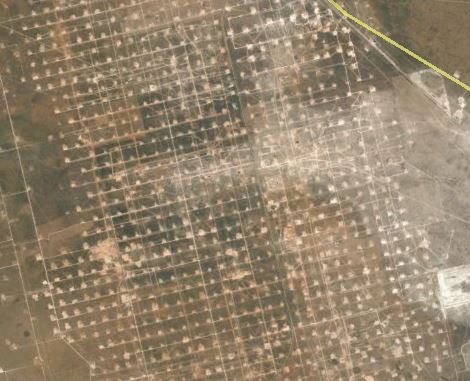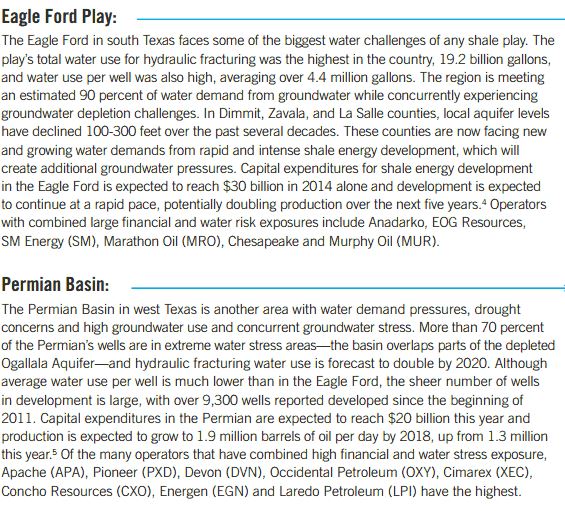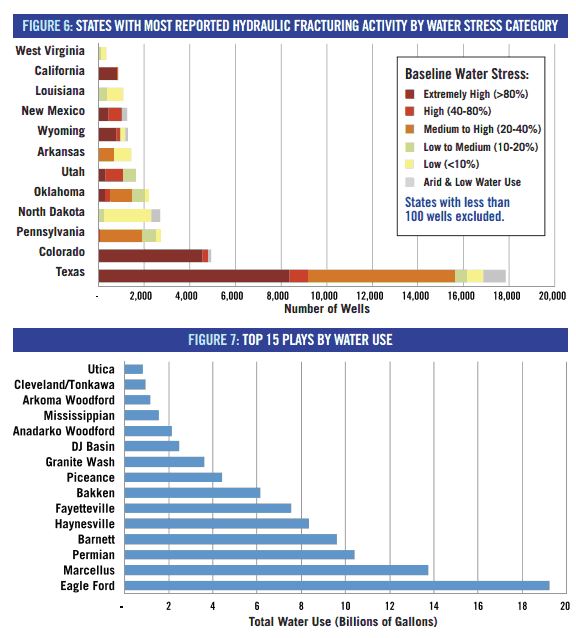The Atlantic Council, a Washington-based think tank, has published a draft white paper on the exploration industry’s use of water in Texas. The draft paper, “Sustainable Water Management in the Texas Oil and Gas Industry,” was written by John Tintera, of the Austin firm Sebree & Tintera. Tintera, formerly executive director of the Texas Railroad Commission, is now president of the Texas Water Recycling Association. The draft paper can be viewed here: DID264_1_073014.pdf. The Atlantic Council also has a white paper, “Produced Water: Asset or Waste?“, on its website.
Articles Posted in Energy and the Environment
Concerns Continue of Water Well Contamination from Hydraulic Fracturing
Investigations continue in response to complaints of alleged contamination of water wells from drilling activity in the Barnett Shale.
In May, the Texas Railroad Commission issued a report of its investigation of complaints of well contamination by methane in Parker County. It concluded that “the evidence is insufficient to conclude that Barnett Shale production activities have caused or contributed to methane contamination in the aquifer beneath the neighborhood.”
But Parker County resident Steve Lipsky, who’s complaint at the RRC caused it to conduct its new study, continues his battle with Range Resources, arguing that its wells are responsible for the methane in his water well. Two other scientists who have reviewed the RRC test data concluded that the gas in Lipsky’s water is definitely the result of fracking operations.
Reclamation of Lands Impacted by Oil and Gas Operations
In the last century in West Texas, oil and gas exploration in the Permian Basin scarred the landscape. Below is a Google Earth view of an area of Ward County in far West Texas, showing the drilling pads and roads from oil and gas development.

At the time of this development the surface of this land, dry and semi-desert, was considered relatively worthless, and the impact of oil exploration to the surface of the land was considered a small price to pay for the wealth of oil found under the ground.
Today, landowners have become more ecologically conscious and protective of the natural environment of their lands. Increasingly, oil and gas leases are including provisions requiring restoration of the surface by exploration companies. But restoration of semi-arid lands in West Texas is not a simple task and requires patience and expertise, as well as significant resources.
$3 Million Verdict for Nuisance in Barnett Shale Case
There’s lots of buzz about a recent verdict in a case filed by a landowner in Dallas County alleging injuries from air emissions from drilling and production of Barnett Shale wells in Wise County. The case is Lisa Parr v. Aruba Petroleum, Cause No. 11-01650-E, in the County Court at Law No. 5 of Dallas County. The jury returned a verdict for personal injury and property damages of $2.9 million. According to the petition (Parr – 11th Amended Petition.pdf), Aruba had 22 wells within two miles of the Parrs’ 40 acres, including one within 800 feet.
CNN quotes the plaintiff, Lisa Parr, as saying that says she’s not opposed to the work oil companies do. She simply wants them to do their business responsibly.
“We are not anti-fracking or anti-drilling. My goodness, we live in Texas. Keep it in the pipes, and if you have a leak or spill, report it and be respectful to your neighbors. If you are going to put this stuff in close proximity to homes, be respectful and careful.”
Methane Fugitive Emissions Face Increased Scrutiny
Emissions of methane from oil and gas exploration, production and transportation facilities have become a big topic in the news recently. The E&P industry touts natural gas as a more environmentally friendly fuel than coal for electric generation, reducing greenhouse gas emissions. But methane is a powerful greenhouse gas, and there is much debate over the amount of fugitive emissions from wells, pipelines, processing facilities and other industries handling the fuel.
- The UN Intergovernmental Panel on Climate Change has endorsed natural gas as a “bridge fuel” to reduce greenhouse gases.
- The EPA has issued estimates of methane fugitive emissions that have been criticized as low by environmental groups.
Colorado’s New Air Pollution Rules in Texas?
I ran across this article from the Miami Herald: “Colorado’s new drilling rules seen as making an impact in Texas.” Colorado recently adopted tough air emissions rules applicable to the oil and gas exploration, production and transportation industries, intended to reduce emissions of methane. Those rules were adopted in collaboration with oil companies active in Colorado, and were supported by Anadarko, DCP Midstream, EnCana, and Noble Energy. According to the article, several companies have approached the Environmental Defense Fund expressing interest in getting Colorado’s rules adopted in Texas. Jim Marston, VP at EDF, said that “The companies are often ahead of the Texas state government” on environmental issues.
Texas regulators often tout Texas as the nation’s leader in oil and gas regulation. Recently, the Texas Railroad Commission, which regulates oil and gas in Texas, has been having to play catch-up. It only recently hired a seismologist to study seismic activity caused by wastewater injection and has not yet agreed that injection is a cause or earthquakes near injection wells. Last year, the RRC adopted tougher casing regulations in response to concerns about possible groundwater contamination from drilling and completion operations. The Texas Commission on Environmental Quality, the agency that regulates air emissions, has increased its monitoring of air emissions from oil and gas operations, particularly in the Barnett Shale, in response to complaints and concerns raised in and around Fort Worth.
Colorado’s new rules are an effort to significantly reduce methane emissions from oil and gas facilities by requiring better emissions controls, better detection and faster fixing of leaks. Methane is a powerful greenhouse gas, and capturing fugitive emissions of methane also saves money for the companies and their royalty owners. EDF recently commissioned a study by ICF International to quantify the cost and savings of reducing methane emissions. The study found that industry could cut methane emissions by 40 percent below projected 2018 levels at an average annual cost of less than one cent per mcf of produced natural gas by adopting available emissions-control technologies and better leak-detection practices. The practices would have the additional benefit of reducing emissions of volatile organic compounds and other hazardous air pollutants.
National Geographic – The Great Energy Challenge
National Geographic has started a website called The Great Energy Challenge that provides a wealth of information about energy and the environment. “The Great Energy Challenge convenes and engages influential citizens and key energy stakeholders in solutions-based thinking and dialogue about our shared energy future.” Multiple articles from distinguished scientists provide education, explore innovative technologies, and seek to engage the public in a meaningful way about our energy future. Its home page is here.
Here is a good article discussing five innovative technologies for cleaner shale energy production and transportation, including water-free fracing, using recycled water or brackish water for fracing, using natural gas instead of diesel fuel to power drilling and completion, and efforts to reduce methane emissions in exploration, production and transportation of natural gas.
Here is a quiz to see how much you know about water and energy. Did you know that it takes 2.8 to 6.6 gallons of water to refine one gallon of gasoline? That it takes 780 gallons of water to produce one gallon or corn ethanol?
Ceres Report on Stresses on Groundwater Caused by Fracing
Ceres, a nonprofit focusing on climate change, water scarcity and sustainability, has issued a report, Hydraulic Fracturing & Water Stress: Water Demand by the Numbers, a Shareholder, Lender & Operator Guide to Water Sourcing. Here are some excerpts:

________________________________________________________________________________

________________________________________________________________________________________
Environmental Effects of the Oil Boom
As drilling activity in the onshore US continues to grow, more and more attention is being paid to the environmental effects of exploration and production. Media stories abound about groundwater contamination, the demand for fresh water from hydraulic fracturing, increased air emissions from exploration and production, controversy over pipeline condemnation and construction, earthquakes linked to wastewater injection, increased traffic and accidents, and effects on endangered species. Recent examples:
Air Emissions
This week The Center for Public Integrity, InsideClimate News and The Weather Channel released a report, Big Oil, Bad Air, on the effects of drilling in the Eagle Ford Shale on air quality in South Texas. The report is highly critical of the lack of regulation by the Texas Commission of Environmental Quality (TCEQ) of emissions from oil and gas exploration and production operations in that region. Criticism of the report has already hit the media. Here is an industry response to the report from Energy in Depth, a website sponsored by industry. The TCEQ says it plans to conduct video surveillance of air quality over the region this summer.
Another Chapter in EPA’s Battle with Range Resources in Parker County
On December 20, the Office of Inspector General of the Environmental Protection Agency issued its “Response to Congressional Inquiry Regarding the EPA’s Emergency Order to the Range Resources Gas Drilling Company.” The report was requested by Congress as a result of an emergency order issued by the Dallas regional office of the EPA against Range Resources on December 7, 2010. That order required Range to take certain actions based on EPA’s finding that Range’s wells in the Barnett Shale were the likely source of contamination of water wells in Parker County.
I have written about Range’s saga before. EPA sued Range to enforce its emergency order. Range disputed and fought the EPA order, suing in the U.S. Court of Appeals to get the order revoked. Range called a hearing before the Texas Railroad Commission (in which EPA did not participate), after which the RRC found that Range’s wells were not the source of the gas in the water wells. One of the well owners, the Lipskys, sued Range in state court for damages; Range countersued, contending that the Lipskys had falsified evidence and defamed the company. The district court found that Lipsky had created a “deceptive video” that was “calculated to alarm the public into believing the water was burning.” The Lispkys have appealed to the Texas Supreme Court, where their case remainds pending.
 Oil and Gas Lawyer Blog
Oil and Gas Lawyer Blog

